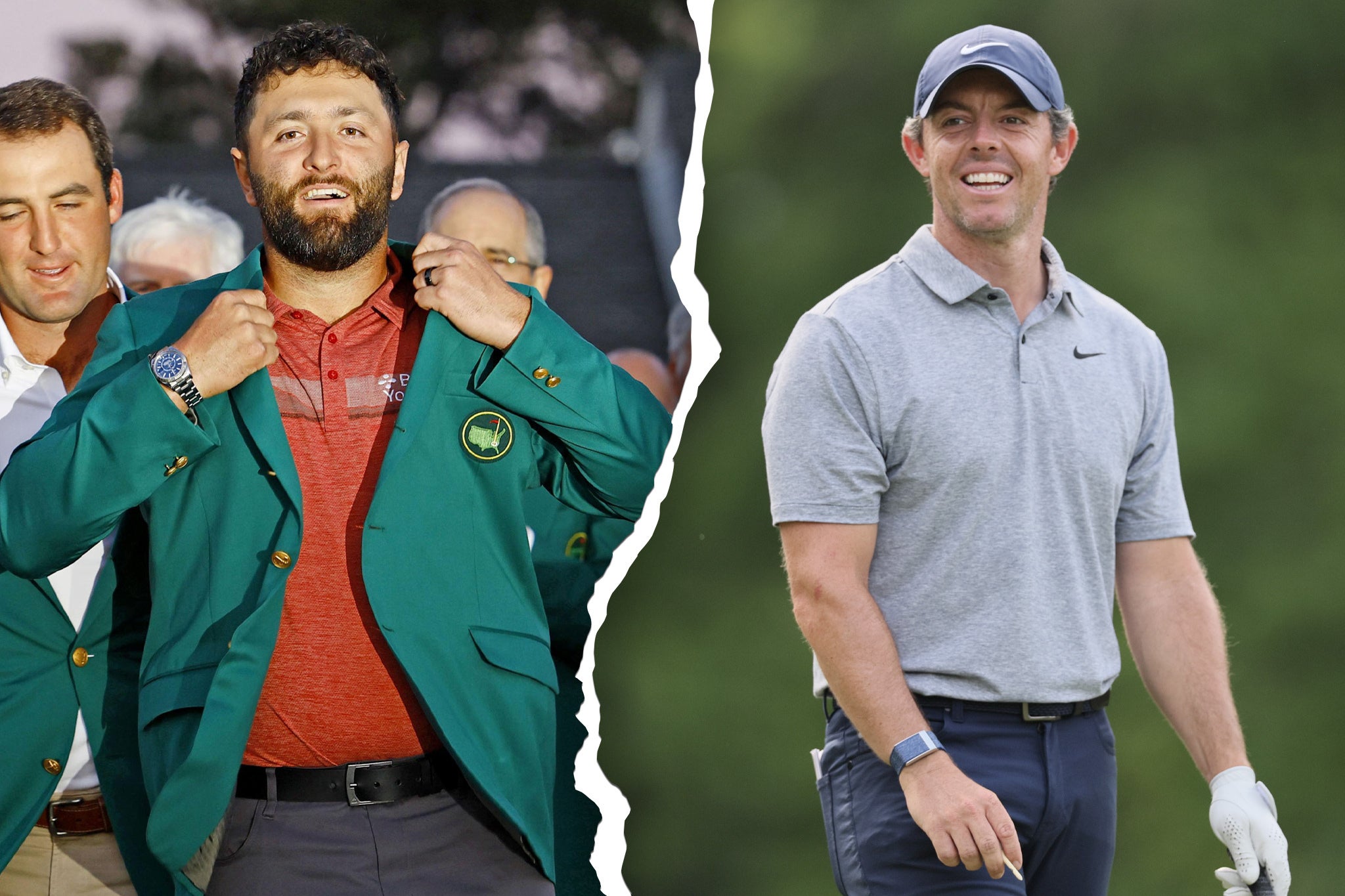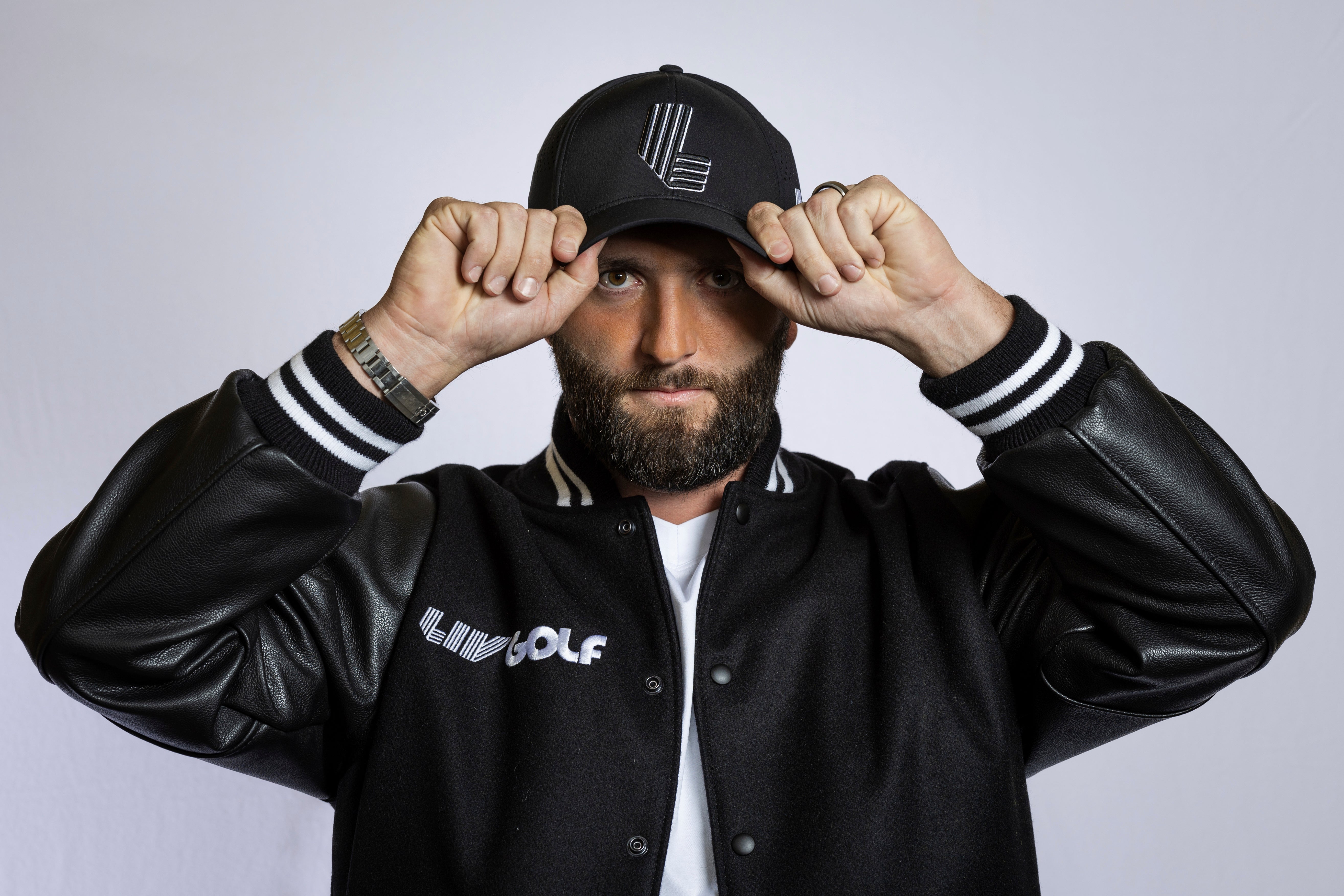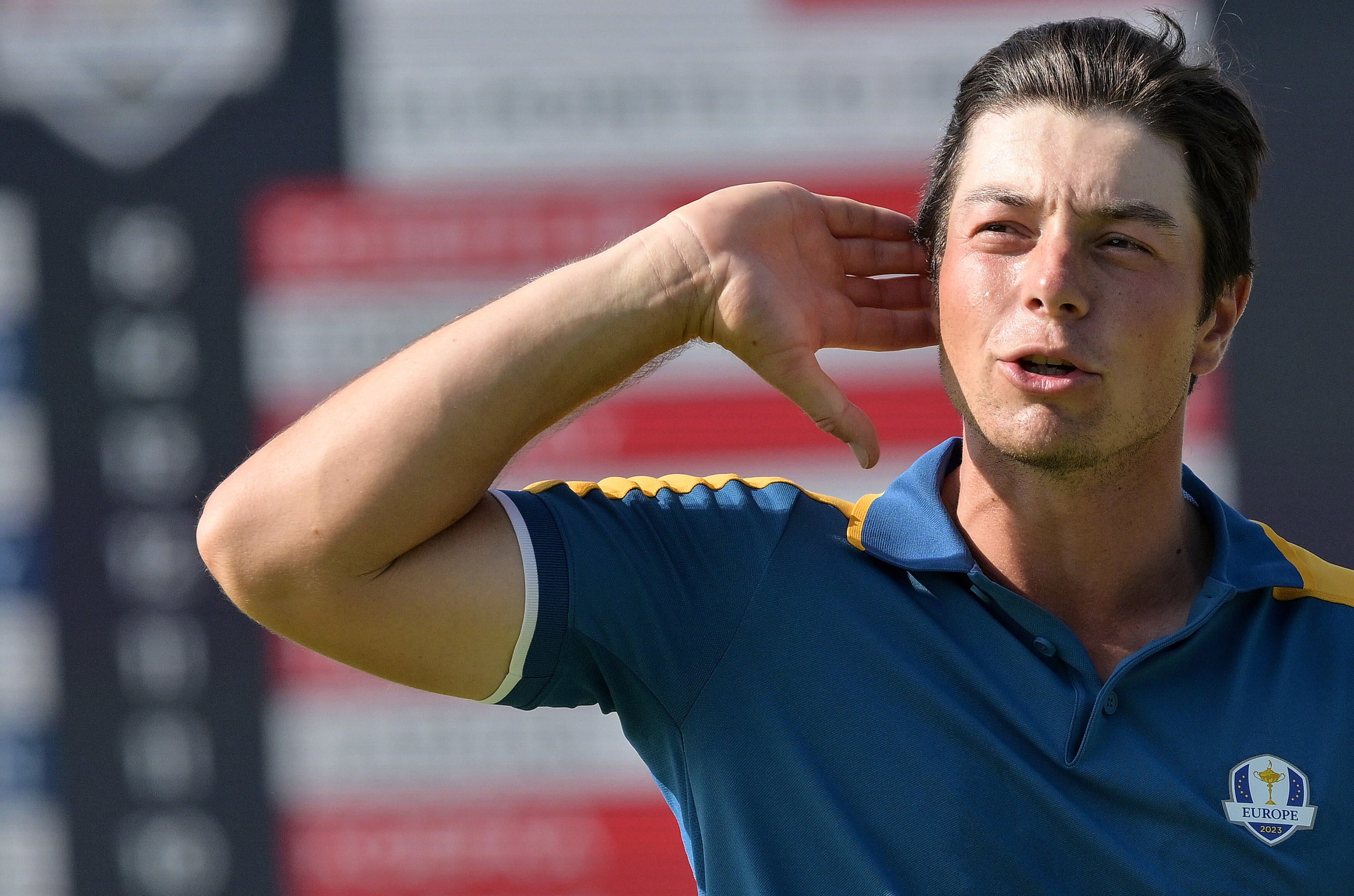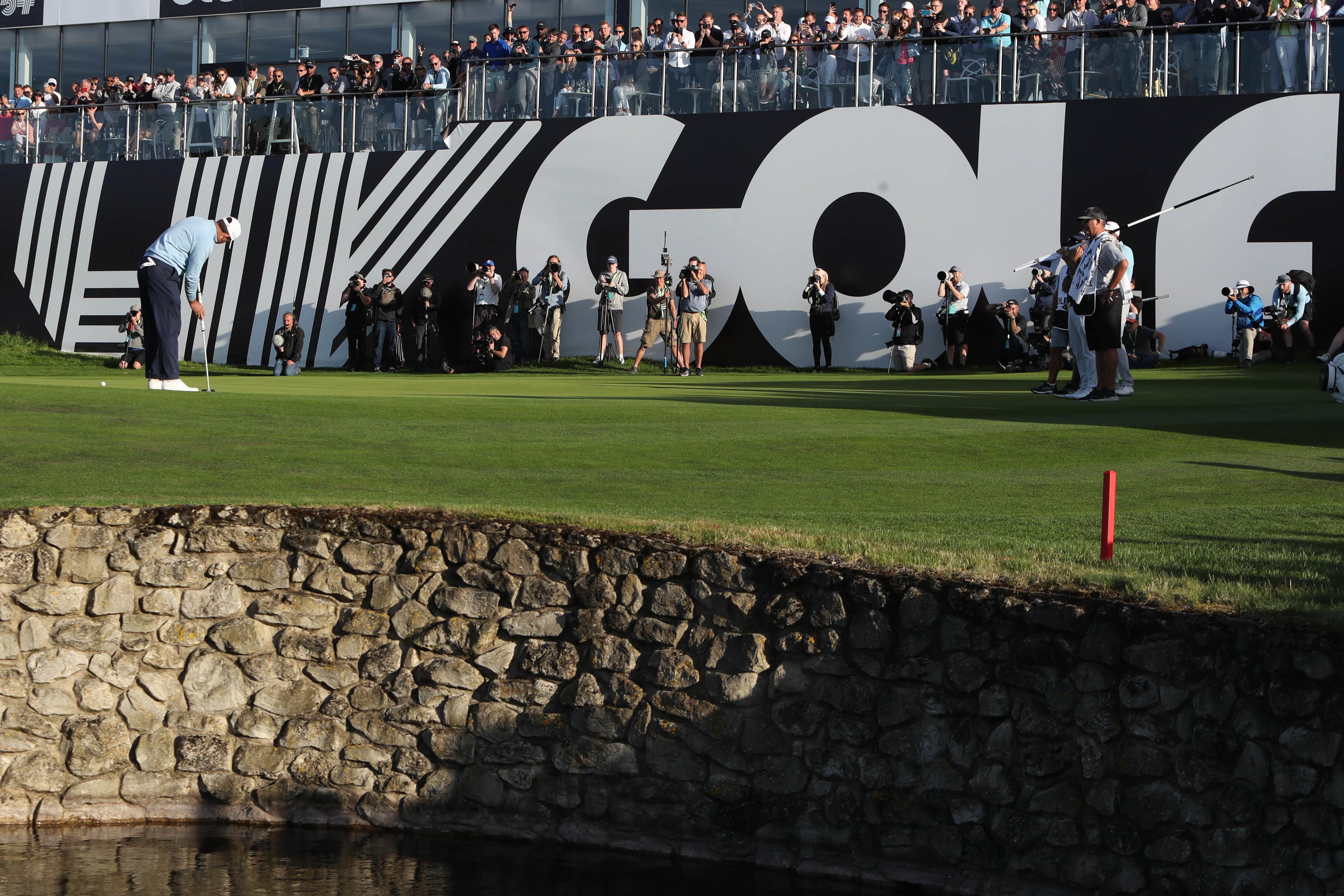Show me the money: Jon Rahm and the battle for the future of golf
The golf establishment is being smashed out of bounds by Saudi money, says Jim White. As Jon Rahm’s explosive $450m defection to LIV golf proves, in any throw-your-money-on-the-table competition, there can only be one winner. And it isn’t the PGA


When he finished stone-cold last in the PGA Tour Championship back in August, for his four days of work the Canadian golfer Nick Taylor earned more than a Briton on the country’s average salary could bank in 10 years. Mind, Taylor’s $500,000 (£398,000) return on his very laboured labour was somewhat overshadowed by the cash the champion, Viktor Hovland, trousered. His reward for a weekend of flawless chipping and putting was an eye-watering $18m (£14,329,800), the kind of money the average Brit would require several lifetimes to accumulate. Well, unless they won the lottery.
But here’s the thing about the PGA Tour Championship: only the most diehard of golf enthusiasts would have noticed it was even happening. This was not the Masters, the Open or the Ryder Cup, the competitions that resonate beyond the 18th hole into the wider consciousness. There was no green jacket or claret jug up for grabs; sporting immortality was not at stake in a competition whose history stretches back no further than 1987. Rather this was the tournament that pays more than all the rest, the one that has become noteworthy solely for how it trades on the financial scale of its winnings. So it was that in one competition, Hovland earned more than all but a handful of Premier League footballers – our standard reference point for the lavishly remunerated – will do across a season.
And that, increasingly, is the way with golf: this is a sport in which money does all the talking.
Take the Spaniard Jon Rahm. On Thursday the world number three, and currently the most successful golfer in Europe, announced he had signed a deal that makes Hovland’s Tour Championship winnings look limp. He is joining the LIV Tour on a contract reckoned to be worth $450m (£358m). That is not potential accumulated prize money, by the way. There is no need for him to win anything: it is guaranteed income.
Rahm’s preposterous new take-home wage and Hovland’s comically inflated prize are connected. They are the consequence of an arms race to control the future of the game of golf, a battle in which cash is the principal weapon.

It began – this international money-chucking extravaganza – in October 2021 when Greg Norman, the Great White Shark of golfing tussles in the Nineties, announced a new rival to the existing round of competitions called the LIV Tour. He spoke of it as a revolution in the game, bringing in new audiences, new razzmatazz and new excitement. On courses mainly owned by Donald Trump, a fresh level of entertainment would be on offer. Fireworks, disco music and natty uniforms were but the start of it.
What intrigued the rest of us, however, was not the extravagance of the promise as much as the identity of the backers. This was a competition financed by the Saudi Public Investment Fund, which owns Newcastle United. Their involvement was part of the Saudi state’s ambition to diversify its economy away from oil production by becoming the world’s leading sports promoter. Tennis, boxing, Formula One, the football World Cup: they were after the lot.
Golf, though, was at the forefront of their urge to dominate. There was to be no hanging around. To give the new tour substance, it required some golfers to play in it. The more renowned the putters, the better. And what the Saudi backers quickly came to recognise is this: money is the most effective lubricant of persuasion. Better still, it is a resource to which they have almost unlimited access.

Thus it was how a roster of professionals was quickly accumulated by dangling sizeable financial carrots in their direction. Among them are household names like Lee Westwood, Ian Poulter, Sergio Garcia and Phil Mickelson. In truth, many of them were approaching their dotage as pros, no longer at the top of the leaderboard and recognising that here was the opportunity to buff up their pension. Sure, some dressed up their involvement as wishing to be part of the new revolution. Others preferred to admit that the lure of cash was compelling.
“I don’t care what anyone says,” Harold Varner III said when asked for his reasons for joining LIV. “It’s about the damn money.”
The PGA and its European equivalent the DP World Tour, anxious to preserve their territory in the face of this threat, initially reacted with draconian intensity. Bans were threatened, LIV signings would be barred from the majors. It quickly became clear such a response would not stand up in a court of law. This was less protecting their own interests, more restraint of trade.
So, appreciative of the fact that to keep attracting the television contracts that are their commercial lifeline they needed the leading players to be involved, the established bodies changed tack. To lessen the urge for defection, prize money was upped, the most inconspicuous of PGA competitions was gifted a new level of funding. In order to keep its most televisual assets on side, the PGA also instigated a profit-sharing scheme which it called the Player Impact Programme. It was effectively the reward for fealty, a thank-you cheque for not signing for LIV. This last season, Rory McIlroy topped the PIP payment list, pocketing $12m (£9.5m) basically for being a popular draw. Tiger Woods, still the game’s biggest name despite his ravaged physique stopping him from being remotely competitive, got nearly as much. Rahm, incidentally, picked up close to £6m from the scheme.

But ultimately whatever the establishment did it could never match the Saudis. As Rahm’s move proved, in any throw-your-money-on-the-table competition, there could only be one winner. And it wasn’t the PGA.
Those behind LIV too, though, began to realise the flaw in their approach. For all the hype about finance and signings, their freshly invented tournaments were no match as television spectacles for the grand old statement competitions. However swanky their presentation skills, whatever the cash hurled at the screen, it became clear few were tuning in to watch their output: one of their tournaments at Mayakoba in Mexico attracted a worldwide television audience of just 8,000. Not exactly a bumper return for all that investment.
It became clear to them that what they needed was not just the players, they needed the history. Behind the scenes, they worked feverishly to find a way to compromise their ambition with the establishment’s reluctance. And back in August came the astonishing announcement that the PGA and LIV were to engage in merger talks. Golf’s civil war appeared to be over.
It was a deal the prospect of which infuriated many of those players who had stuck with the existing order. McIlroy in particular had been vociferous about the treachery of those who had gone to LIV. His stance had caused him constant friction, rubbing up against former friends who had defected. Now it appeared his stand was pointless.
It is said, after some intense lobbying from aggrieved players, the PGA came to recognise the concern that it was going to be outflanked, that it would inevitably cede control of the majors to the upstarts. They began to stall on negotiations. Some figures suggested they be more aggressive in their approach. Woods, who now holds a key role in the PGA Tour’s management structure, has intimated that he sees the 31 December date first mooted for signing the deal with LIV as a hard deadline. If a suitable arrangement pleasing both sides cannot be reached by then, he and others counsel that the PGA should walk away.
Which is why the timing of the arrangement with Rahm is so significant. Gradually, LIV has been attracting the current big names. Brooks Koepka, Cameron Smith and Bryson DeChambeau, players still winning majors, signed on. But Rahm is the biggest of them all. Not just because of his excellence, but because of his previous antipathy. Back in the summer, when he was leading Europe to victory in the Ryder Cup (a competition from which European LIV players are excluded) he insisted he had no incentive to sign up for the new tour in town. He claimed for him history and heritage were much more important than cash.
“When you win a green jacket, I can tell you right now that any major champion this year might not remember how much money they made,” he said. “And that’s the beauty about this game and I think that’s kind of how it should be.”
It was a bold declaration of resistance that lasted about as long as it took to bank that supersized cheque. Now, with his defection, the Saudis have proven that even the most entrenched principle can be circumvented by cash.

With the player who is, behind Woods and McIlroy, the established tour’s most substantial name, poached, the LIV team have hugely strengthened their hand in the negotiations. What it suggests is that if they do not get their way, they can ultimately diminish the PGA’s roster to the point of insignificance. Give us what we want, the Rahm deal says, or we just will keep picking off your star assets.
And what they want is to take control of the game, to be the organisation behind the crown jewels. Being the presiding authority behind the Masters or the US Open is a very different proposition to some non-event competition in Mayakoba.
You might think none of this matters. After all, the PGA committee are not exactly the most compelling of stewards. A new broom, some new enthusiasm and a new direction might be precisely what is required to, in Norman’s much-used phrase, “grow the game”.
Except the truth is, the money that has been chucked around since LIV’s arrival has acted less as a stabiliser and more as poison. It has turned it into a sport in which finance has come to define achievement. When Lionel Messi lifted the World Cup this time last year, nobody mentioned the prize money. But at every golf tournament, the weight of the winner’s cheque is the first thing to be analysed. LIV competitions are solely about the scale of the dosh. And that is a depressing definition of sport.
Even this year’s Ryder Cup – the competition in which the players participate solely for the cause, not the income – became clouded in a dispute about cash. Patrick Cantlay, of the defeated American team, wondered why the players were not rewarded when the tournament makes an absolute shedload of money. Who was getting the dosh, he argued, when those doing the thing that actually draws in the revenue remain unpaid? And in a sense, you could understand the complaint. This is what golfers have grown used to: that their importance and purpose can only be measured in dollar bills. The sad fact is, thanks to the financial battles swirling around it, they are now competing in a sport in which money has become the only thing that counts.
Join our commenting forum
Join thought-provoking conversations, follow other Independent readers and see their replies
Comments
Bookmark popover
Removed from bookmarks